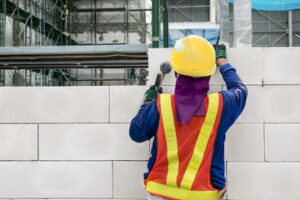Masonry Construction
Pro Angle Masonry Charleston is a method of construction using individual units that are laid in mortar to form the structure. It is a common method for building walls, floors, and roofs. It is often used to build houses and buildings, including churches and monuments. This article discusses the construction process and the materials and techniques used. It will also discuss the cost involved.
Masonry is the process of building a structure out of individual units laid together using mortar. It is a great way to make structures durable and long-lasting. It is used in the construction of buildings and monuments. However, the process is not always easy and can be dangerous. For this reason, it is crucial to know how to do masonry properly.
There are many methods for masonry construction. The most common method is called cavity wall construction. The building’s height determines how thick the walls need to be. The wall can be made from both solid and hollow units. The latter helps prevent water damage from penetrating the walls. The walls are attached together with metal ties.
Another method of construction is called post-tensioning. In this method, rods are placed in the spaces between concrete blocks and tensioned at the top of the wall. This technique helps buildings withstand earthquakes, fires, and other natural disasters. The main problem with masonry walls is that they are weak in the tension region.
When it comes to masonry construction, it is important to follow standards and ensure that workers are following best practices. These precautions prevent electrocution and electric shocks. Furthermore, all scaffolding components should be designed and constructed following safety regulations.
Using techniques to reinforce masonry structures can be a key factor in seismic protection for a building. While masonry is rigid, different events can cause masonry structures to deform, so there are a variety of techniques to reinforce masonry walls. One option is to apply fiber-reinforced polymer, which can improve the load-carrying capacity and structural integrity of a building.
The center core technique can increase a building’s load-carrying capacity by up to two times. Another technique, called ferrocement, consists of several layers of closely spaced hardware embedded in high-strength cement mortar. The resulting mesh improves the inelastic deformation capacity of masonry units, and it prevents cracking.
A similar technique, called center core masonry wall reinforcement, involves installing a reinforced core into the vertical direction of a masonry wall. This steel bar does not need to be pre-stressed, and the drilled hole is larger. This process improves the resistance of masonry to cracking while keeping the stiffness of the building unchanged. It has been applied to more than 60 projects with positive results.
In addition to strengthening masonry walls, it can improve their flexural and shear strength. It is usually applied to masonry walls with an externally-applied strip or sheet. However, this process is a difficult process that requires specialized training and technical knowledge. Moreover, the use of materials is a costly option and must be done with care.
The costs of masonry construction depend on a few factors, including the size and type of the project. It also depends on how many layers you need, the type of bricks used, the amount of mortar needed between the bricks, and the number of bricks per square foot. Luckily, there are many resources online that can help you compare prices and find the best masonry contractors.
For one, masonry is a more cost-effective material than wood. It creates a more air-tight building envelope, which makes it possible to use smaller HVAC units. It also reduces fire and life safety requirements, as concrete is less combustible than wood. This means a lower overall cost for your building.
Another advantage of masonry is its ability to withstand large uplift and overturning forces. Masonry structures can withstand wind speeds of 250 mph, and they can resist penetration by a 15 lb projectile traveling at 100 mph. This makes them a great choice for areas with extreme weather, such as coastal regions and the Midwest.
Another factor that affects costs is location. Large cities have higher labor costs than smaller towns. When hiring a masonry company, be sure to ask for a breakdown of labor costs by square footage. Masonry companies often charge more per square foot for labor, which is the most expensive component of masonry work. Fortunately, there are online tools that can help you find the most affordable masonry contractor in your area.





